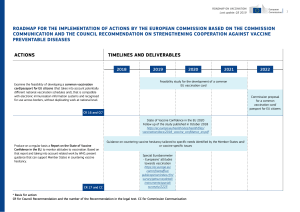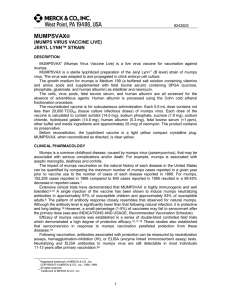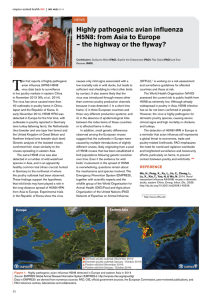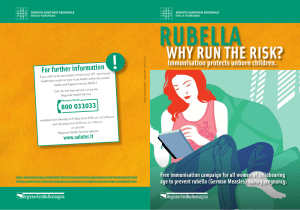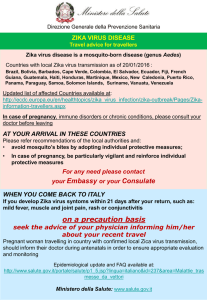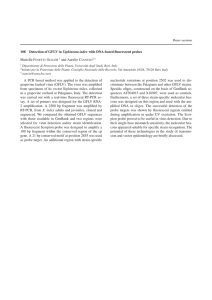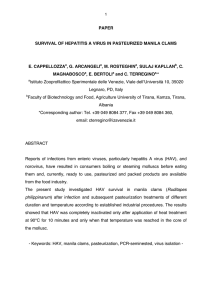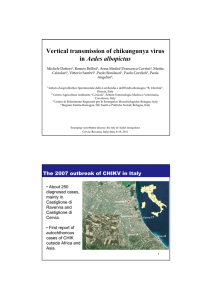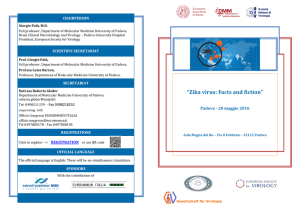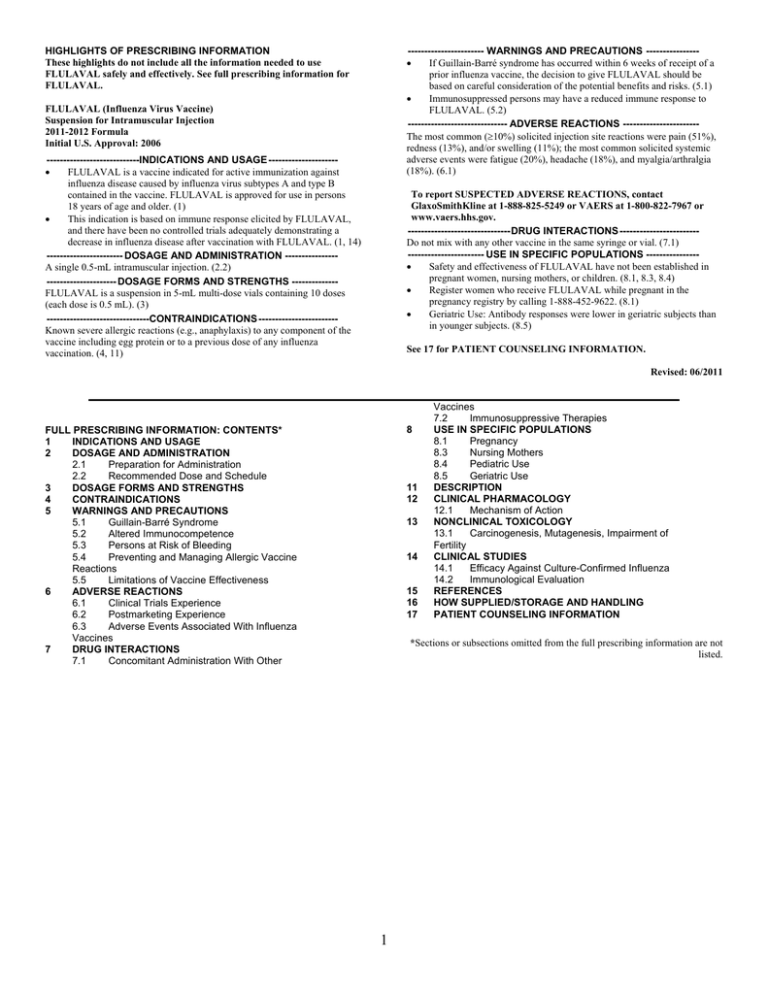
----------------------- WARNINGS AND PRECAUTIONS ---------------
If Guillain-Barré syndrome has occurred within 6 weeks of receipt of a
prior influenza vaccine, the decision to give FLULAVAL should be
based on careful consideration of the potential benefits and risks. (5.1)
Immunosuppressed persons may have a reduced immune response to
FLULAVAL. (5.2)
------------------------------ ADVERSE REACTIONS ----------------------The most common (10%) solicited injection site reactions were pain (51%),
redness (13%), and/or swelling (11%); the most common solicited systemic
adverse events were fatigue (20%), headache (18%), and myalgia/arthralgia
(18%). (6.1)
HIGHLIGHTS OF PRESCRIBING INFORMATION
These highlights do not include all the information needed to use
FLULAVAL safely and effectively. See full prescribing information for
FLULAVAL.
FLULAVAL (Influenza Virus Vaccine)
Suspension for Intramuscular Injection
2011-2012 Formula
Initial U.S. Approval: 2006
----------------------------INDICATIONS AND USAGE --------------------
FLULAVAL is a vaccine indicated for active immunization against
influenza disease caused by influenza virus subtypes A and type B
contained in the vaccine. FLULAVAL is approved for use in persons
18 years of age and older. (1)
This indication is based on immune response elicited by FLULAVAL,
and there have been no controlled trials adequately demonstrating a
decrease in influenza disease after vaccination with FLULAVAL. (1, 14)
----------------------- DOSAGE AND ADMINISTRATION ---------------A single 0.5-mL intramuscular injection. (2.2)
--------------------- DOSAGE FORMS AND STRENGTHS -------------FLULAVAL is a suspension in 5-mL multi-dose vials containing 10 doses
(each dose is 0.5 mL). (3)
-------------------------------CONTRAINDICATIONS -----------------------Known severe allergic reactions (e.g., anaphylaxis) to any component of the
vaccine including egg protein or to a previous dose of any influenza
vaccination. (4, 11)
To report SUSPECTED ADVERSE REACTIONS, contact
GlaxoSmithKline at 1-888-825-5249 or VAERS at 1-800-822-7967 or
www.vaers.hhs.gov.
-------------------------------DRUG INTERACTIONS -----------------------Do not mix with any other vaccine in the same syringe or vial. (7.1)
----------------------- USE IN SPECIFIC POPULATIONS ---------------
Safety and effectiveness of FLULAVAL have not been established in
pregnant women, nursing mothers, or children. (8.1, 8.3, 8.4)
Register women who receive FLULAVAL while pregnant in the
pregnancy registry by calling 1-888-452-9622. (8.1)
Geriatric Use: Antibody responses were lower in geriatric subjects than
in younger subjects. (8.5)
See 17 for PATIENT COUNSELING INFORMATION.
Revised: 06/2011
8 FULL PRESCRIBING INFORMATION: CONTENTS*
INDICATIONS AND USAGE 1 2 DOSAGE AND ADMINISTRATION 2.1 Preparation for Administration 2.2 Recommended Dose and Schedule 3 DOSAGE FORMS AND STRENGTHS 4 CONTRAINDICATIONS 5 WARNINGS AND PRECAUTIONS 5.1 Guillain-Barré Syndrome 5.2 Altered Immunocompetence 5.3 Persons at Risk of Bleeding 5.4 Preventing and Managing Allergic Vaccine
Reactions 5.5 Limitations of Vaccine Effectiveness 6 ADVERSE REACTIONS 6.1 Clinical Trials Experience 6.2 Postmarketing Experience 6.3 Adverse Events Associated With Influenza
Vaccines 7 DRUG INTERACTIONS 7.1 Concomitant Administration With Other
11 12 13 14 15 16 17 Vaccines 7.2 Immunosuppressive Therapies USE IN SPECIFIC POPULATIONS 8.1 Pregnancy 8.3 Nursing Mothers 8.4 Pediatric Use 8.5 Geriatric Use DESCRIPTION CLINICAL PHARMACOLOGY 12.1 Mechanism of Action NONCLINICAL TOXICOLOGY 13.1 Carcinogenesis, Mutagenesis, Impairment of
Fertility CLINICAL STUDIES 14.1 Efficacy Against Culture-Confirmed Influenza 14.2 Immunological Evaluation REFERENCES HOW SUPPLIED/STORAGE AND HANDLING PATIENT COUNSELING INFORMATION *Sections or subsections omitted from the full prescribing information are not
listed.
1
______________________________________________________________________
1
FULL PRESCRIBING INFORMATION
2
3
4
5
6
7
8
1
9
10
11
12
13
14
15
16
17
18
19
20
21
22
23
24
2
25
26
27
3
28
29
30
31
4
CONTRAINDICATIONS
Do not administer FLULAVAL to anyone with known severe allergic reactions (e.g.,
anaphylaxis) to any component of the vaccine including egg protein or to a previous dose of any
influenza vaccination [see Description (11)].
32
33
34
5
5.1
INDICATIONS AND USAGE
FLULAVAL® is indicated for active immunization against influenza disease caused by
influenza virus subtypes A and type B contained in the vaccine. FLULAVAL is approved for use
in persons 18 years of age and older.
This indication is based on immune response elicited by FLULAVAL, and there have
been no controlled trials adequately demonstrating a decrease in influenza disease after
vaccination with FLULAVAL [see Clinical Studies (14)].
DOSAGE AND ADMINISTRATION
For intramuscular administration only.
2.1
Preparation for Administration
Shake the multi-dose vial vigorously each time before withdrawing a dose of vaccine.
Parenteral drug products should be inspected visually for particulate matter and discoloration
prior to administration, whenever solution and container permit. If either of these conditions
exists, the vaccine should not be administered.
Between uses, return the multi-dose vial to the recommended storage conditions, between
2º and 8ºC (36º and 46ºF). Do not freeze. Discard if the vaccine has been frozen. Once entered, a
multi-dose vial, and any residual contents, should be discarded after 28 days.
It is recommended that small syringes (0.5-mL or 1-mL) be used to minimize any product
loss.
2.2
Recommended Dose and Schedule
FLULAVAL should be administered as a single 0.5-mL injection by the intramuscular
route preferably in the region of the deltoid muscle of the upper arm.
Do not administer this product intravenously, intradermally or subcutaneously.
DOSAGE FORMS AND STRENGTHS
FLULAVAL is a suspension available in 5-mL multi-dose vials containing 10 doses
(each dose is 0.5 mL).
WARNINGS AND PRECAUTIONS
Guillain-Barré Syndrome
If Guillain-Barré syndrome has occurred within 6 weeks of receipt of a prior influenza
2
35
36
37
38
39
40
41
42
43
44
45
46
47
48
49
50
51
52
vaccine, the decision to give FLULAVAL should be based on careful consideration of the
potential benefits and risks.
5.2
Altered Immunocompetence
If FLULAVAL is administered to immunosuppressed persons, including individuals
receiving immunosuppressive therapy, the immune response may be lower than in
immunocompetent persons.
5.3
Persons at Risk of Bleeding
As with other intramuscular injections, FLULAVAL should be given with caution in
individuals with bleeding disorders such as hemophilia or on anticoagulant therapy to avoid the
risk of hematoma following the injection.
5.4
Preventing and Managing Allergic Vaccine Reactions
Prior to administration, the healthcare provider should review the immunization history
for possible vaccine sensitivity and previous vaccination-related adverse reactions to allow an
assessment of benefits and risks. Appropriate medical treatment, including epinephrine, and
supervision must be available to manage possible anaphylactic reactions following
administration of the vaccine.
5.5
Limitations of Vaccine Effectiveness
Vaccination with FLULAVAL may not protect all susceptible individuals.
53
54
55
56
57
58
59
60
61
62
63
64
65
66
67
68
69
70
71
72
73
6
6.1
ADVERSE REACTIONS
Clinical Trials Experience
Because clinical trials are conducted under widely varying conditions, adverse reaction
rates observed in the clinical trials of a vaccine cannot be directly compared to rates in the
clinical trials of another vaccine, and may not reflect the rates observed in practice. As with any
vaccine, there is the possibility that broad use of FLULAVAL could reveal adverse events not
observed in clinical trials.
In the largest clinical trial, the most common (10%) solicited injection site reactions
were pain (51%), redness (13%), and/or swelling (11%); the most common solicited systemic
adverse events were fatigue (20%), headache (18%), and myalgia/arthralgia (18%).
Safety data has been obtained from 3 randomized, controlled trials, one of which was a
placebo-controlled efficacy study. In these trials, 9,836 subjects were randomized to receive
either FLULAVAL (5,114 subjects in the safety analysis), FLUZONE, a US-licensed trivalent,
inactivated influenza virus vaccine, manufactured by Sanofi Pasteur SA (894 subjects in the
safety analysis), or placebo (3,828 subjects in the safety analysis), intramuscularly. In these
studies, solicited events were collected for 4 days (i.e., 30 minutes post-vaccination through the
next 3 days) using diary cards. Unsolicited adverse events that occurred within 22 days of
vaccination (day 0-21) were recorded based on spontaneous reports or in response to queries
about changes in health status.
Study 1 (Immunogenicity): Safety information was collected in a randomized,
controlled US study. This study included 1,000 adults 18 to 64 years of age who were
3
74
75
76
77
78
79
80
81
82
83
84
85
86
87
88
89
90
91
92
randomized to receive FLULAVAL (N = 721) or a US-licensed trivalent, inactivated influenza
virus vaccine (N = 279). Among recipients of FLULAVAL, 57% were female; 91% of subjects
were white and 9% were of other racial/ethnic groups. The mean age of subjects was 38 years;
80% were 18 to 49 years of age and 20% were 50 to 64 years of age.
Study 2 (Immunogenicity Non-Inferiority): Safety information was collected in a
randomized, double-blind, active-controlled US study. The study included 1,225 adults
50 years of age randomized to receive FLULAVAL (N = 610) or a US-licensed trivalent,
inactivated influenza virus vaccine (N = 615). In the total population, 57% were female; 95% of
subjects were white and 5% were of other racial/ethnic groups. The mean age of subjects was
66 years (46% were 50 to 64 years of age, 41% were 65 to 79 years of age, and 13% were
80 years of age).
Study 3 (Efficacy): Safety information was collected in a double-blind, placebocontrolled US study. The study included 7,658 adults 18 to 49 years of age randomized to
receive FLULAVAL (N = 3,807) or placebo (N = 3,851). In the total population, 61% were
female; 84% of subjects were white, 10% black, 2% Asian, and 4% were of other racial/ethnic
groups. The mean age of subjects was 33 years.
Solicited Adverse Events: Solicited local adverse reactions and systemic adverse
events collected for 4 days (day of vaccination and the next 3 days) are presented in Table 1.
4
93
94
95
Table 1. Incidence of Solicited Local Adverse Reactions and Systemic Adverse Events in
the First 4 Days After Administration of FLULAVAL, Comparator Influenza Vaccinea, or
Placebo (Total Vaccinated Cohort)
Percentage of Subjects Reporting Eventb
Study 1
Study 2c
Study 3c
(18 to 64 years of age)
(50 years of age and older)
(18 to 49 years of age)
96
97
98
99
100
101
102
103
104
105
106
107
108
109
110
111
FLULAVAL
N = 721
Comparator
N = 279
FLULAVAL
N = 610
Comparator
N = 615
FLULAVAL
N = 3,783
Placebo
N = 3,828
Local
Pain
Redness
Swelling
24
11
10
31
10
10
25
10
7
32
11
9
51
13
11
14
6
3
Systemic
Headache
Fatigue
Myalgiad
Fever (99.5F)
Malaise
Sore throat
Reddened eyes
Cough
Chills
Chest tightness
Facial swelling
18
17
13
11
10
9
6
6
5
3
1
17
15
16
10
10
9
5
7
2
1
1
11
12
11
1
6
5
4
5
3
2
1
12
13
10
1
7
6
7
6
6
2
2
18
20
18
3
9
9
7
8
4
3
1
19
18
10
1
6
9
6
7
4
3
1
a
b
c
d
US-licensed trivalent, inactivated influenza virus vaccine (manufactured by Sanofi Pasteur SA).
Total vaccinated cohort for safety included all vaccinated subjects for whom safety data were
available.
Study 2: NCT00232947; Study 3: NCT00216242.
For Study 2 and Study 3, includes myalgia and arthralgia.
Unsolicited Adverse Events: The incidence of unsolicited adverse events in the 21 days
post-vaccination was comparable for FLULAVAL and the active comparator in Study 1 (16%
and 15%, respectively) and in Study 2 (18% and 21%, respectively). In Study 3, the incidence of
unsolicited adverse events was comparable for the groups (21% for FLULAVAL and 19% for
placebo).
Unsolicited adverse events defined as reported with FLULAVAL in >1.0% of subjects
are described as follows: Study 1: Cough, headache, and pharyngolaryngeal pain; Study 2:
Diarrhea, headache, and nasopharyngitis; and Study 3: Pharyngolaryngeal pain, headache,
fatigue, cough, injection site pain, upper respiratory tract infection, musculoskeletal pain,
nasopharyngitis, injection site erythema and discomfort.
5
112
113
114
115
116
117
118
119
120
121
122
123
124
125
126
127
128
129
130
131
132
133
134
135
136
137
138
139
140
141
142
143
144
145
146
147
148
149
150
151
Serious Adverse Events (SAEs): In Study 1, no SAEs were reported. In Study 2, 3%
of subjects receiving FLULAVAL and 3% of subjects receiving the active comparator reported
SAEs. In Study 3, 1% of subjects receiving FLULAVAL and 1% of subjects receiving placebo
reported SAEs. In the 3 clinical trials, the rates of SAEs were comparable between groups and
none of the SAEs were considered related to vaccination.
6.2
Postmarketing Experience
In addition to reports in clinical trials, the following adverse events have been identified
during postapproval use of FLULAVAL. Because these events are reported voluntarily from a
population of uncertain size, it is not always possible to reliably estimate their incidence rate or
establish a causal relationship to the vaccine. Adverse events described here are included
because: a) they represent reactions which are known to occur following immunizations
generally or influenza immunizations specifically; b) they are potentially serious; or c) the
frequency of reporting.
Blood and Lymphatic System Disorders: Lymphadenopathy.
Eye Disorders: Eye pain, photophobia.
Gastrointestinal Disorders: Dysphagia, vomiting.
General Disorders and Administration Site Conditions: Chest pain, injection site
inflammation, asthenia, injection site rash, influenza-like symptoms, abnormal gait, injection site
bruising, injection site sterile abscess.
Immune System Disorders: Allergic edema of the mouth, anaphylaxis, allergic edema
of the throat.
Infections and Infestations: Rhinitis, laryngitis, cellulitis.
Musculoskeletal and Connective Tissue Disorders: Muscle weakness, arthritis.
Nervous System Disorders: Dizziness, paresthesia, hypoesthesia, hypokinesia, tremor,
somnolence, syncope, Guillain-Barré syndrome, convulsions/seizures, facial or cranial nerve
paralysis, encephalopathy, limb paralysis.
Psychiatric Disorders: Insomnia.
Respiratory, Thoracic, and Mediastinal Disorders: Dyspnea, dysphonia,
bronchospasm, throat tightness.
Skin and Subcutaneous Tissue Disorders: Urticaria, localized or generalized rash,
pruritus, sweating.
Vascular Disorders: Flushing, pallor.
6.3
Adverse Events Associated With Influenza Vaccines
Anaphylaxis has been reported after administration of FLULAVAL. Although
FLULAVAL contains only a limited quantity of egg protein, this protein can induce immediate
hypersensitivity reactions among persons who have severe egg allergy. Allergic reactions include
hives, angioedema, allergic asthma, and systemic anaphylaxis [see Contraindications (4)].
The 1976 swine influenza vaccine was associated with an increased frequency of
Guillain-Barré syndrome (GBS). Evidence for a causal relation of GBS with subsequent vaccines
prepared from other influenza viruses is unclear. If influenza vaccine does pose a risk, it is
6
152
153
154
155
156
157
probably slightly more than 1 additional case/1 million persons vaccinated.
Neurological disorders temporally associated with influenza vaccination such as
encephalopathy, optic neuritis/neuropathy, partial facial paralysis, and brachial plexus
neuropathy have been reported.
Microscopic polyangitis (vasculitis) has been reported temporally associated with
influenza vaccination.
158
159
160
161
162
163
164
165
166
167
7
7.1
DRUG INTERACTIONS
Concomitant Administration With Other Vaccines
There are no data to assess the concomitant administration of FLULAVAL with other
vaccines. If FLULAVAL is to be given at the same time as another injectable vaccine(s), the
vaccines should always be administered at different injection sites. FLULAVAL should not be
mixed with any other vaccine in the same syringe or vial.
7.2
Immunosuppressive Therapies
Immunosuppressive therapies, including irradiation, antimetabolites, alkylating agents,
cytotoxic drugs, and corticosteroids (used in greater than physiologic doses), may reduce the
immune response to FLULAVAL.
168
169
170
171
172
173
174
175
176
177
178
179
180
181
182
183
184
185
186
187
188
189
8
8.1
USE IN SPECIFIC POPULATIONS
Pregnancy
Pregnancy Category B
A reproductive and developmental toxicity study has been performed in female rats at a
dose approximately 56 times the human dose (on a mg/kg basis) and revealed no evidence of
impaired female fertility or harm to the fetus due to FLULAVAL. There are, however, no
adequate and well-controlled studies in pregnant women. Because animal reproduction studies
are not always predictive of human response, FLULAVAL should be given to a pregnant woman
only if clearly needed.
In a reproductive and developmental toxicity study, the effect of FLULAVAL on
embryo-fetal and pre-weaning development was evaluated in pregnant rats. Animals were
administered FLULAVAL by intramuscular injection once prior to gestation, and during the
period of organogenesis (gestation days 6, 8, 11, and 15), 0.1 mL/rat/occasion (approximately
56-fold excess relative to the projected human dose on a body weight basis). No adverse effects
on mating, female fertility, pregnancy, parturition, lactation parameters, and embryo-fetal or preweaning development were observed. There were no vaccine-related fetal malformations or other
evidence of teratogenesis.
Pregnancy Registry: GlaxoSmithKline maintains a surveillance registry to collect data
on pregnancy outcomes and newborn health status outcomes following vaccination with
FLULAVAL during pregnancy. Women who receive FLULAVAL during pregnancy should be
encouraged to contact GlaxoSmithKline directly or their healthcare provider should contact
GlaxoSmithKline by calling 1-888-452-9622.
7
190
191
192
193
194
195
196
197
198
199
200
201
8.3
202
203
204
205
206
207
208
209
210
211
212
213
214
215
216
217
218
11
219
220
221
222
223
224
225
226
227
228
12
12.1
Nursing Mothers
It is not known whether FLULAVAL is excreted in human milk. Because many drugs are
excreted in human milk, caution should be exercised when FLULAVAL is administered to a
nursing woman.
8.4
Pediatric Use
Safety and effectiveness of FLULAVAL in pediatric patients have not been established.
8.5
Geriatric Use
In clinical trials, there were 330 subjects who were 65 years of age and received
FLULAVAL; 142 of these subjects were 75 years of age. Hemagglutination-inhibiting (HI)
antibody responses were lower in geriatric subjects than younger subjects after administration of
FLULAVAL. [See Clinical Studies (14.2).] Solicited adverse events were similar in frequency to
those reported in younger subjects [see Adverse Reactions (6.1)].
DESCRIPTION
FLULAVAL, Influenza Virus Vaccine, for intramuscular injection, is a trivalent, splitvirion, inactivated influenza virus vaccine prepared from virus propagated in the allantoic cavity
of embryonated hens’ eggs. Each of the influenza virus strains is produced and purified
separately. The virus is inactivated with ultraviolet light treatment followed by formaldehyde
treatment, purified by centrifugation, and disrupted with sodium deoxycholate.
FLULAVAL is a sterile, translucent to whitish opalescent suspension in a phosphatebuffered saline solution that may sediment slightly. The sediment resuspends upon shaking to
form a homogeneous suspension. FLULAVAL has been standardized according to USPHS
requirements for the 2011-2012 influenza season and is formulated to contain 45 mcg
hemagglutinin (HA) per 0.5-mL dose in the recommended ratio of 15 mcg HA of each of the
following 3 strains: A/California/7/2009 NYMC X-181 (H1N1), A/Victoria/210/2009 NYMC
X-187 (H3N2) (an A/Perth/16/2009-like virus), and B/Brisbane/60/2008. Thimerosal, a mercury
derivative, is added as a preservative. Each dose contains 25 mcg mercury. Each dose may also
contain residual amounts of egg proteins (1 mcg ovalbumin), formaldehyde (25 mcg), and
sodium deoxycholate (50 mcg). Antibiotics are not used in the manufacture of this vaccine.
The vial stopper does not contain latex.
CLINICAL PHARMACOLOGY
Mechanism of Action
Influenza illness and its complications follow infection with influenza viruses. Global
surveillance of influenza identifies yearly antigenic variants. For example, since 1977, antigenic
variants of influenza A (H1N1 and H3N2) viruses and influenza B viruses have been in global
circulation. Specific levels of HI antibody titer post-vaccination with inactivated influenza virus
vaccines have not been correlated with protection from influenza illness but the antibody titers
have been used as a measure of vaccine activity. In some human challenge studies, antibody
titers of ≥1:40 have been associated with protection from influenza illness in up to 50% of
subjects.1,2 Antibody against one influenza virus type or subtype confers little or no protection
8
229
230
231
232
233
234
235
236
237
238
against another virus. Furthermore, antibody to one antigenic variant of influenza virus might not
protect against a new antigenic variant of the same type or subtype. Frequent development of
antigenic variants through antigenic drift is the virological basis for seasonal epidemics and the
reason for the usual change of one or more new strains in each year’s influenza vaccine.
Therefore, inactivated influenza vaccines are standardized to contain the hemagglutinins of
strains (i.e., typically 2 type A and 1 type B), representing the influenza viruses likely to circulate
in the United States in the upcoming winter.
Annual revaccination with the current vaccine is recommended because immunity
declines during the year after vaccination, and because circulating strains of influenza virus
change from year to year.3
239
240
241
242
13
13.1
243
244
245
246
247
248
249
250
251
252
253
254
255
256
257
258
14
14.1
NONCLINICAL TOXICOLOGY
Carcinogenesis, Mutagenesis, Impairment of Fertility
FLULAVAL has not been evaluated for carcinogenic or mutagenic potential, or for
impairment of fertility.
CLINICAL STUDIES
Efficacy Against Culture-Confirmed Influenza
The efficacy of FLULAVAL was evaluated in a randomized, double-blind, placebocontrolled study conducted in the United States during the 2005-2006 and 2006-2007 influenza
seasons (Study 3). Efficacy of FLULAVAL was defined as the prevention of culture-confirmed
influenza A and/or B cases, for vaccine antigenically matched strains, compared with placebo.
Healthy subjects 18 to 49 years of age were randomized (1:1); a total of 3,783 subjects received
FLULAVAL and 3,828 subjects received placebo [see Adverse Reactions (6.1)]. Subjects were
monitored for influenza-like illnesses (ILI) starting 2 weeks post-vaccination and for duration of
approximately 7 months thereafter. Culture-confirmed influenza was assessed by active and
passive surveillance of ILI. Influenza-like illness was defined as illness sufficiently severe to
limit daily activity and including cough, and at least one of the following: Fever >99.9F, nasal
congestion or runny nose, sore throat, myalgia or arthralgia, headache, feverishness or chills.
After an episode of ILI, nose and throat swab samples were collected for analysis; attack rates
and vaccine efficacy were calculated using the per protocol cohort (Table 2).
9
259
260
261
262
263
264
265
266
267
268
269
270
271
272
273
274
275
276
277
278
279
280
281
282
283
284
285
286
Table 2. Vaccine Efficacy Against Culture-Confirmed Influenza (Per Protocol Cohort)
Attack Rates (n/N)
Vaccine Efficacy
97.5% CI
a
b
Lower Limit
N
n
%
%
Antigenically Matched Strains
FLULAVAL
3,714
23
0.6
46.3
9.8c
Placebo
3,768
45
1.2
–
–
All Culture-Confirmed Influenza (Matched, Unmatched, and Untyped)
FLULAVAL
3,714
30
0.8
49.3
20.3
Placebo
3,768
60
1.6
–
–
CI = Confidence Interval.
a
Per Protocol Cohort for efficacy included subjects with no protocol deviations considered to
compromise efficacy data.
b
Number of influenza cases.
c
Lower limit of the 97.5% CI for vaccine efficacy against influenza due to antigenically
matched strains was less than the pre-defined success criterion of 35%.
14.2
Immunological Evaluation
Study 1 (Immunogenicity): In a randomized, active-controlled trial of FLULAVAL,
immune responses, specifically HI antibody titers to each virus strain in the vaccine, were
evaluated in sera obtained 21 days after administration of FLULAVAL.
A 1,000-subject randomized, blinded, and controlled US study was performed in 18- to
64-year-old healthy adults. A total of 721 subjects received FLULAVAL, and 279 received a
US-licensed trivalent, inactivated influenza virus vaccine, FLUZONE (manufactured by Sanofi
Pasteur SA), intramuscularly; 959 subjects had complete serological data and no major protocol
deviations [see Adverse Reactions (6.1)].
Analyses of immunogenicity (Table 3) were performed for each hemagglutinin (HA)
antigen contained in the vaccine: 1) assessment of the lower bounds of 2-sided 95% confidence
intervals for the proportion of subjects with HI antibody titers of 1:40 after vaccination, and
2) assessment of the lower bounds of 2-sided 95% confidence intervals for rates of
seroconversion (defined as a 4-fold increase in post-vaccination HI antibody titer from prevaccination titer 1:10, or an increase in titer from <1:10 to 1:40). The pre-specified success
criteria for HI titer 1:40 was 70% and for seroconversion rate was 40%. The lower limit of the
2-sided 95% CI for the percentage of subjects who achieved an HI titer of 1:40 exceeded the
pre-defined criteria for the A strains. The lower limit of the 2-sided 95% CI for the percentage of
subjects who achieved seroconversion exceeded the pre-defined criteria for all 3 strains.
10
287
288
Table 3. Serum Hemagglutination-Inhibiting (HI) Antibody Responses to FLULAVALa
(Per Protocol Cohortb)
FLULAVAL
N = 692
% of Subjects (95% CI)
Pre-vaccination
Post-vaccination
24.6
96.5 (94.9, 97.8)
58.7
98.7 (97.6, 99.4)
5.4
62.9 (59.1, 66.5)
289
290
291
292
293
294
295
296
297
298
299
300
301
302
303
304
305
306
307
308
309
310
311
312
HI titers 1:40 against:
A/New Caledonia/20/99 (H1N1)
A/Wyoming/03/03 (H3N2)
B/Jiangsu/10/03
Seroconversionc to:
A/New Caledonia/20/99 (H1N1)
85.6 (82.7, 88.1)
A/Wyoming/03/03 (H3N2)
79.3 (76.1, 82.3)
B/Jiangsu/10/03
58.4 (54.6, 62.1)
CI = Confidence Interval.
a
Results obtained following vaccination with FLULAVAL manufactured for the 2004–2005
season.
b
Per Protocol Cohort for immunogenicity included subjects with complete pre- and post-dose
HI titer data and no major protocol deviations.
c
Seroconversion defined as a 4-fold increase in post-vaccination HI antibody titer from prevaccination titer 1:10, or an increase in titer from <1:10 to 1:40.
Study 2 (Immunogenicity Non-Inferiority): In a randomized, double-blind, activecontrolled US study, immunological non-inferiority of FLULAVAL was compared with a
US-licensed trivalent, inactivated influenza virus vaccine, FLUZONE, manufactured by Sanofi
Pasteur SA. A total of 1,225 adults 50 years of age in stable health were randomized to receive
FLULAVAL or the comparator vaccine intramuscularly [see Adverse Reactions (6.1)]. Immune
responses, specifically HI antibody titers to each virus strain in the vaccine, were evaluated in
sera obtained 21 days after administration of FLULAVAL or the comparator vaccine.
Analyses of immunogenicity were performed for each HA antigen contained in the
vaccines: 1) assessment of the lower bounds of 2-sided 95% confidence intervals for the
geometric mean antibody titer (GMT) ratio (FLULAVAL/comparator), and 2) assessment of the
lower bounds of 2-sided 95% confidence intervals for seroconversion rates (defined as a 4-fold
increase in post-vaccination HI antibody titer from pre-vaccination titer 1:10, or an increase in
titer from <1:10 to 1:40). Non-inferiority of FLULAVAL to the comparator vaccine was
established for all 6 co-primary endpoints (Table 4). Within each age stratum, immunogenicity
results were similar between the groups.
11
313
314
315
316
317
318
319
320
321
322
323
324
325
326
327
328
329
330
331
Table 4. Serum Hemagglutination-Inhibiting (HI) Antibody Responses to FLULAVAL
Versus Comparator Influenza Vaccinea (Per Protocol Cohortb)
Active Comparatorc
FLULAVAL
N = 595
N = 592
Day 21 Post-vaccination
GMT
GMT
GMT Ratiod
GMTs Against:
(95% CI)
(95% CI)
(95% CI)
A/New Caledonia/20/99
113.4
110.2
1.03
(H1N1)
(104.7, 122.8)
(101.8, 119.3)
(0.92, 1.15)
A/New York/55/04
223.9
214.6
1.04
(H3N2)
(199.5, 251.3)
(191.3, 240.7)
(0.89, 1.23)
B/Jiangsu/10/03
82.3
97.1
0.85
(74.7, 90.6)
(88.2, 106.8)
(0.74, 0.97)
e
Seroconversion to:
% of Subjects
% of Subjects
Difference in
(95% CI)
(95% CI)
Seroconversion
Ratesf
(95% CI)
A/New Caledonia/20/99
34
32
2
(H1N1)
(30.0, 37.6)
(28.3, 35.9)
(-3.7, 7.0)
A/New York/55/04
83
82
1
(H3N2)
(80.3, 86.3)
(78.4, 84.6)
(-2.6, 6.1)
B/Jiangsu/10/03
53
56
-3
(49.0, 57.1)
(51.6, 59.6)
(-8.3, 3.1)
CI = Confidence Interval; GMT = geometric mean antibody titer.
a
Results obtained following vaccination with influenza vaccines manufactured for the
2005-2006 season.
b
Per Protocol Cohort for immunogenicity included subjects with complete pre- and post-dose
HI titer data and no major protocol deviations.
c
US-licensed trivalent, inactivated influenza virus vaccine (manufactured by Sanofi Pasteur
SA).
d
FLULAVAL met non-inferiority criteria based on GMTs (lower limit of 2-sided 95% CI for
GMT ratio [FLULAVAL/comparator vaccine] 0.67).
e
Seroconversion defined as a 4-fold increase in post-vaccination HI antibody titer from
pre-vaccination titer 1:10, or an increase in titer from <1:10 to 1:40.
f
FLULAVAL met non-inferiority criteria based on seroconversion rates (lower limit of 2-sided
95% CI for difference of FLULAVAL minus the comparator vaccine -10%).
15
REFERENCES
1. Hannoun C, Megas F, Piercy J. Immunogenicity and protective efficacy of influenza
vaccination. Virus Res 2004;103:133-138.
12
332
333
334
335
336
337
2. Hobson D, Curry RL, Beare AS, et al. The role of serum haemagglutination-inhibiting
antibody in protection against challenge infection with influenza A2 and B viruses. J Hyg
Camb 1972;70:767-777.
3. Centers for Disease Control and Prevention. Prevention and control of influenza with
vaccines: Recommendations of the Advisory Committee on Immunization Practices (ACIP).
MMWR 2010;59(RR-8):1-62.
338
339
340
341
342
343
16
HOW SUPPLIED/STORAGE AND HANDLING
FLULAVAL is supplied in a 5-mL multi-dose vial containing ten 0.5-mL doses. Once
entered, the multi-dose vial should be discarded after 28 days.
Store refrigerated between 2º and 8ºC (36º and 46ºF). Do not freeze. Discard if the
vaccine has been frozen. Store in the original package to protect from light.
NDC 19515-888-07 (package of 1 vial containing 10 doses)
344
345
346
347
348
349
350
351
352
353
354
355
356
357
358
359
360
361
362
363
364
17
PATIENT COUNSELING INFORMATION
Inform the vaccine recipient or guardian of the potential benefits and risks of immunization
with FLULAVAL.
Emphasize, when educating vaccine recipients or guardians regarding potential side effects,
that (1) FLULAVAL contains non-infectious killed viruses and cannot cause influenza and
(2) FLULAVAL is intended to provide protection against illness due to influenza viruses
only, and cannot provide protection against all respiratory illness.
Instruct the vaccine recipient or guardian to report any adverse events to their healthcare
provider.
Inform the vaccine recipient or guardian that safety and efficacy have not been established in
pregnant women. Register women who receive FLULAVAL while pregnant in the pregnancy
registry by calling 1-888-452-9622.
Provide the vaccine recipient or guardian Vaccine Information Statements, which are
required by the National Childhood Vaccine Injury Act of 1986 to be given prior to
immunization. These materials are available free of charge at the Centers for Disease Control
and Prevention (CDC) website (www.cdc.gov/vaccines).
Instruct the vaccine recipient or guardian that annual revaccination is recommended.
365
366
367
368
FLULAVAL is a registered trademark of ID Biomedical Corporation of Quebec. FLUZONE is a
registered trademark of Sanofi Pasteur Limited.
Manufactured by ID Biomedical Corporation of Quebec
Quebec City, QC, Canada, US License 1739
Distributed by GlaxoSmithKline
13
369
370
371
372
373
374
Research Triangle Park, NC 27709
©2011, GlaxoSmithKline. All rights reserved.
June 2011
FLV:7PI
14

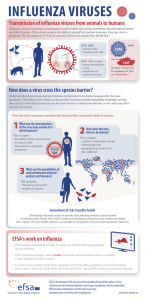

![Yellow-Fever_SA_2012-Ox_CNV [Converted]](http://s1.studylibit.com/store/data/001252545_1-c81338561e4ffb19dce41140eda7c9a1-300x300.png)
